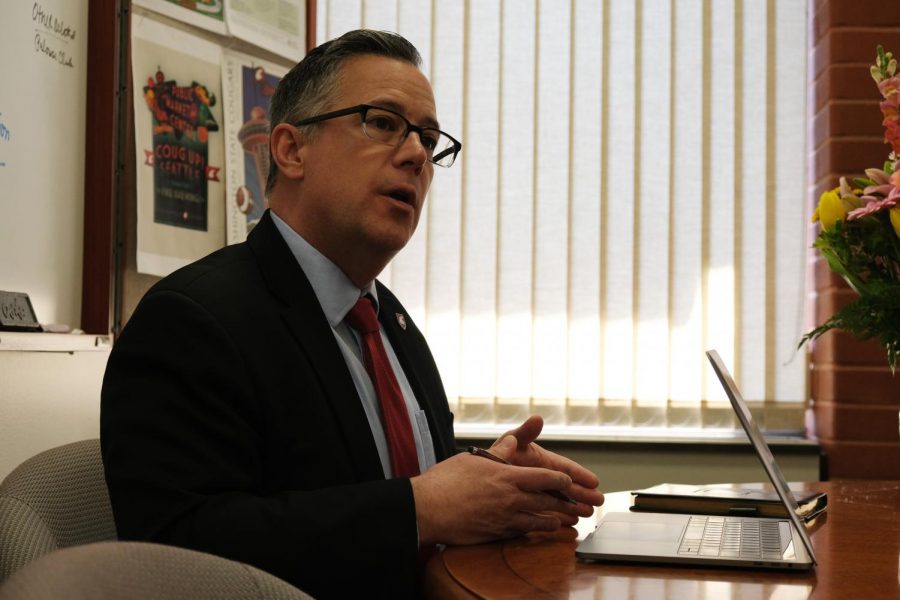Athletics department faces $100 million debt
Plan to break even by 2023 will not include cuts to coaching, administrative salaries
JACOB BERTRAM | DAILY EVERGREEN FILE
Phil Weiler, Vice President for marketing and communication at Washington State University, says one reason for the deficit is that the school makes less money from ticket sales and donations compared to universities of similar size.
June 13, 2019
The WSU Board of Regents approved the athletics budget for the fiscal year 2020, and its plan to have a breakeven operating budget by 2023.
Between 2016 and 2019, WSU Athletics’ operating deficit shrunk by about $4.3 million. But because the department was not making money, the deficit also grew from about $49.4 million to about $98.6 million during those same years, according to the recovery plan.
By 2022, the debt is projected to exceed $103 million, according to the plan.
“The bottom line is, they’re [Athletics] still spending more than they’re bringing in,” said Phil Weiler, vice president of marketing and communication.
Under a state law passed in 2018, athletics departments operating at a deficit at public universities must present a recovery plan to the board of regents and post their financial statements for the past three years on the school website.
According to the budget plan WSU Athletics presented, the department is $20.2 million more in debt than was previously projected.
Some of that debt is attributed to capital projects included in the operating budget, which were not included previously, Weiler said.
WSU will enter the third year of its three-year fiscal recovery plan this fall. Both the athletics department and the Elson S. Floyd College of Medicine are on five-year plans. Weiler said athletics and the medicine college have more time to break even because of how much larger the departments’ deficits are.
To reach a breakeven operating budget, the plan relies on making more money from ticket sales, sale of media rights and donations, rather than making spending cuts, according to the WSU Athletics’ budget fiscal year for 2019-24.
While there are a few expenses in the athletic budget that will be reduced — some severances expire and “indirect institutional support” will also be cut — overall expenses are projected to grow with revenue, and these reductions account for $1.4 million.
Coaches and administrative salaries make up about 35 percent of the budget. In 2024’s budget, they make up about the same percentage, according to the plan.
The plan expects the department to reach a net-positive income by 2023. If spending were to remain the same throughout the plan, WSU Athletics would instead break even by 2021.
Weiler said the question of whether the “arms race” for coaches’ salaries is sustainable is a question that people must come to grips with as a society.
Revenue from student fees is also projected to decrease by 13.3 percent, according to the plan. ASWSU President Quinton Berkompas said he thinks reducing student fees is a great plan because it will ease the financial burden on students.
Weiler said part of the reason for this debt is that WSU makes less money from revenue sources like ticket sales and donations than other universities of similar size.
“We’ve got a great fanbase, people really support athletics, but they don’t support them financially at the same level that other universities get support, which is odd,” he said.
Weiler also said several potential fundraising projects did not work out this year, which accounts for a portion of the higher deficit. One such project involved selling the naming rights to Martin Stadium and Beasley Coliseum.
WSU has 16 teams and the main way that athletic programs save money is by cutting teams, Weiler said. Since schools are required to maintain 16 teams to be a part of the Pac-12, cutting a team to save money would revoke WSU’s Pac-12 membership.
Weiler said that out of the approximately 4,000 universities in the U.S., there are only about 25 athletic programs that break even.
“A good sports program is going to pay for itself,” Berkompas said.























